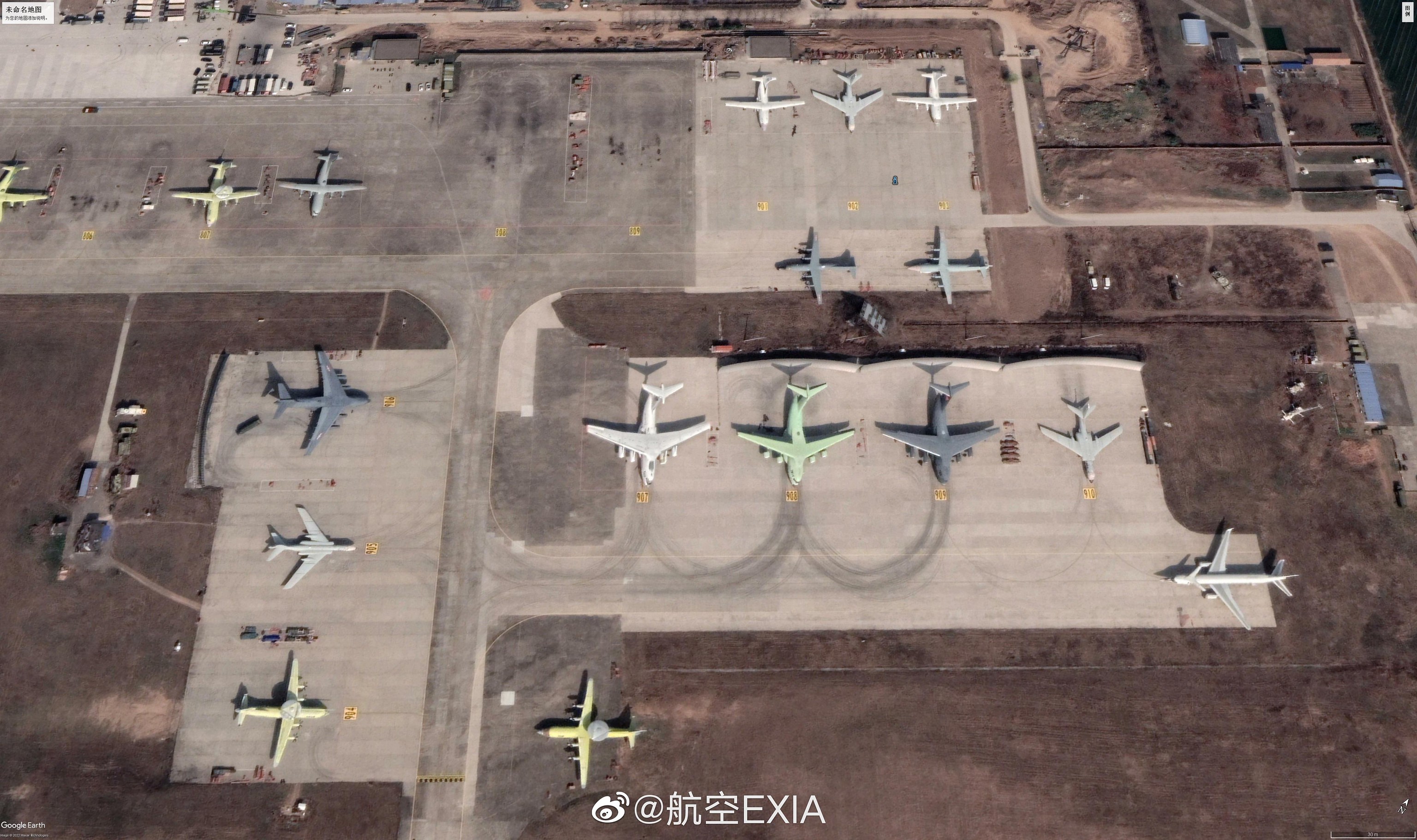by78
General
This could be the upgraded Y-8Q ASW that Huitong has speculated. The tail sting (magnetic anomaly detector) certainly looks different.

The new Y-8Q ASW. The first known images of the entire plane.

This could be the upgraded Y-8Q ASW that Huitong has speculated. The tail sting (magnetic anomaly detector) certainly looks different.


The new Y-8Q ASW. The first known images of the entire plane.

Not sure that's the reason. If E7 is only marginally better than KJ500 now, then it will be well behind KJ500's successor when that enters service. Bearing in mind this kind of high-cost/low density platform generally has ~35-40 year expected service life. To avoid that, USAF needs a system that can potentially match KJ500's successor, not just KJ500 itself, or they're in big trouble in ~20 years.I was listening to Shilao podcast today and they talked about DOD's 2023 budget. The part of AWACS/special missions aircraft was interesting.
They talked about 15 E-3C left out of 31 and retirement of E-8
- says that USAF is not satisfied with E-7 replacing E-3C, since E-7’s electronics really isn’t much better than KJ-500.
- Talked about the failed E-10 project and how it aimed too high and couldn’t be finished. Said USAF has a hard time accepting E-7, because just being a little better than opponent is normally not good enough for USAF.
- E-8 has looked very useful in Ukraine. How can UAVs fully replace E-8?
- They’d like to combine E-3/8 command capabilities in one platform like the abandoned E-10 or space-based AWACS system
To me, a lot of this is a systematic issue with how USAF deal with procurement vs PLAAF. it is also why they are so much more likely to run into budget/timeline overruns. They are generally not satisfied with just surpassing their primary competitor (in this case PLAAF). They set requirements that are far in excess of their opponent. Their aim is to win anywhere in the world with lower numbers through better training and technology.
While that is a workable strategy when their economy is 5 or 6 times larger than their opponent and/or when their technology base is far ahead. It is simply not workable when the economy sizes are comparable and when their civilian industries are not as competitive. In extreme cases like naval shipbuilding, ambitious projects like Zumwalt and LCS run completely over budget while not meeting design requirements. Conservative projects like Burke III still run into major cost overrun ($2.8 billion per) despite being upgrades of mature design.
Things are not as dire in aerospace industry where Boeing/Lockmart have very efficient production capabilities. However, overly ambitious projects like E-10 still do not succeed. It would seem to me that falling in the trap of moonshot projects like space based AWACS inevitably will run into major cost overrun/schedule delays. it's just a terrible strategy to employ. Because of their lack of commitment, they will go years with minimal number of E-3C and no E-8. That capability simply cannot be replicated by single seated F-35 or UAVs.
I think PLA had it's own moonshot in the past with J-20, KJ-2000, and 052C. Thankfully, those were generally successful without major delays that I could note. WS-10 may be the one exception. Now, PLA's new projects like J-16D, J-35, KJ-500, 052D and Z-20 are basically more incremental rather than revolutionary. Based on China's rapid civilian industry development in electronics industry, the upgrade from KJ-2000 to KJ-500 is quite normal. Similarly, Y-9GX12 is a natural evolution of the first generation special missions Aircraft based on Y-8. Those ones generally had 1 task that each did well. Y-9GX12 can now perform ESM, ELINT, SAR surveillance and psychological warfare on one aircraft as a result of miniaturization of all the hardware. It would be a huge move to develop Y-9GX12 right of the bat. But with China's technological jump, it is a reasonable project to carry out. As we've seen KJ-500 produced in large numbers, I hope to see Y-9GX12 also produced in large numbers to replace 1st Generation Y-8 special missions aircraft. Things like space based AWACS would make more sense after they achieve the ability to launch satellites more cheaply.
What's that gadget on the lower right? Is that the plane used to test the J-20's radar?Satellite update.


What's that gadget on the lower right? Is that the plane used to test the J-20's radar?
Not sure that's the reason. If E7 is only marginally better than KJ500 now, then it will be well behind KJ500's successor when that enters service. Bearing in mind this kind of high-cost/low density platform generally has ~35-40 year expected service life. To avoid that, USAF needs a system that can potentially match KJ500's successor, not just KJ500 itself, or they're in big trouble in ~20 years.
The new Y-8Q ASW. The first known images of the entire plane.


